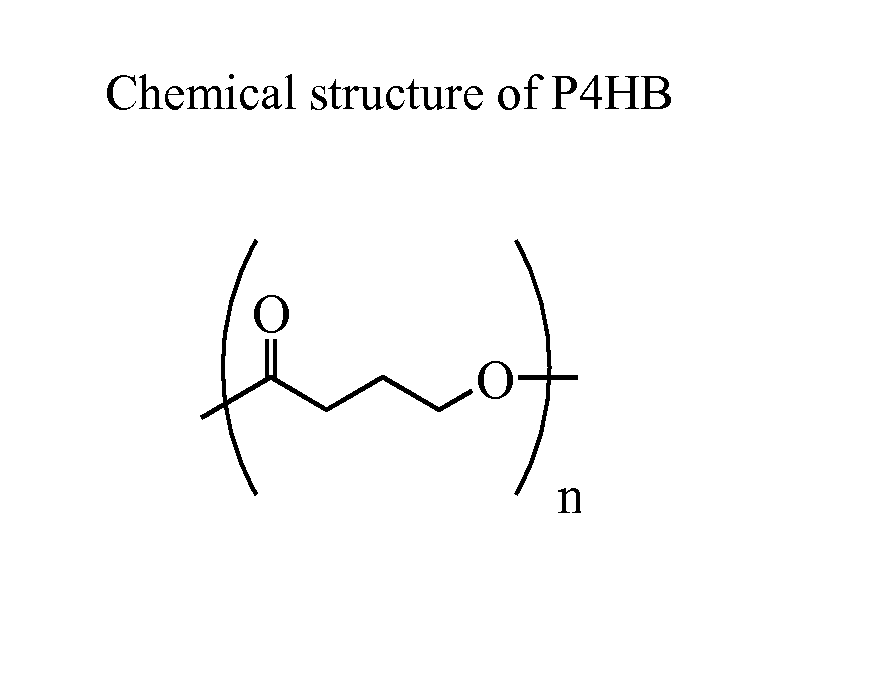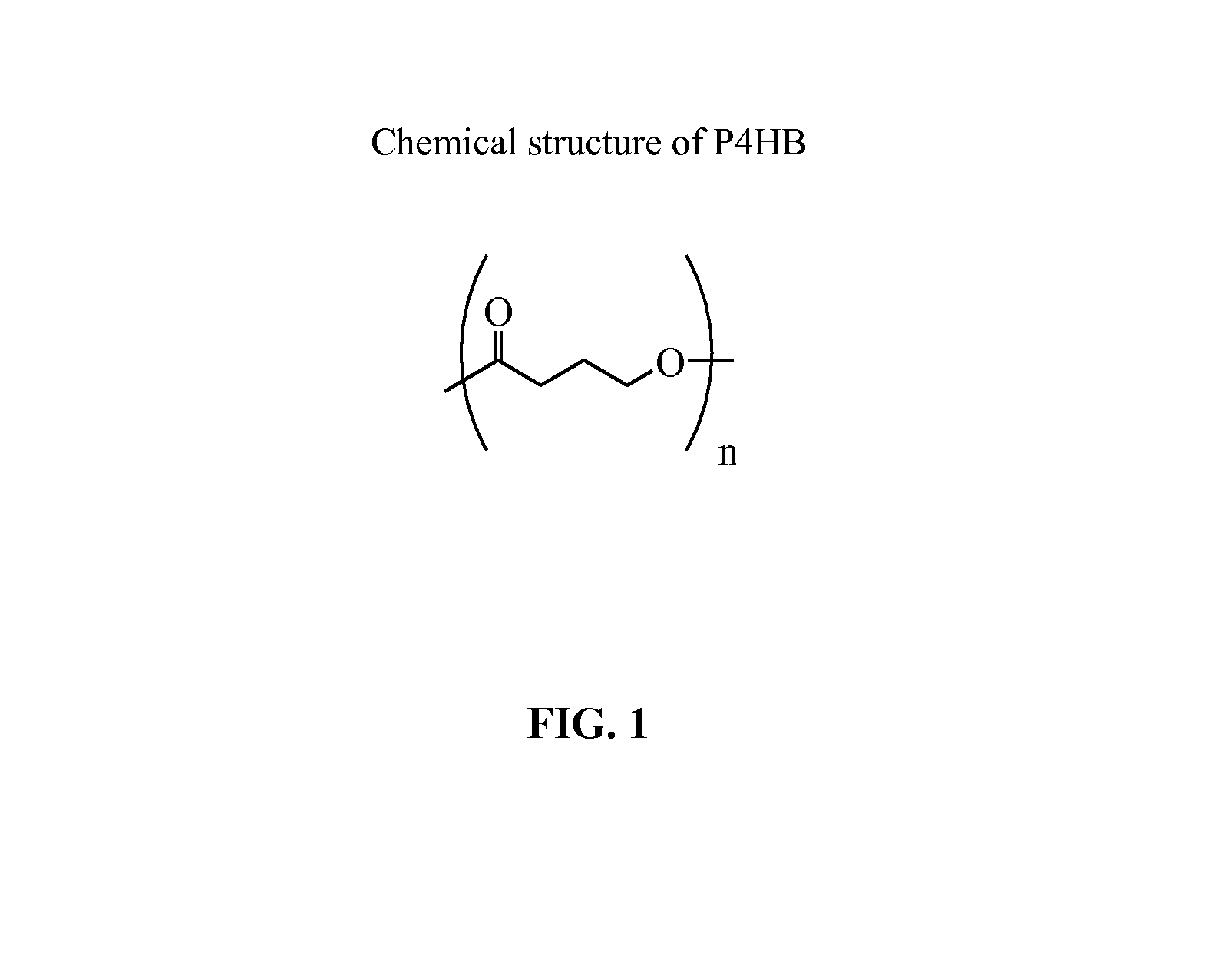Injection Molding of Poly-4-Hydroxybutyrate
a technology of polyhydroxybutyrate and injection molding, which is applied in the direction of prosthesis, nuclear elements, nuclear engineering, etc., can solve the problems of schmitz not disclosing the injection molding process of p4hb or the conditions
- Summary
- Abstract
- Description
- Claims
- Application Information
AI Technical Summary
Benefits of technology
Problems solved by technology
Method used
Image
Examples
example 1
Pelletization of P4HB Homopolymer and Drying
[0049]P4HB granules with an intrinsic viscosity of 2.18 dl / g, and a moisture content no greater than 0.03% by weight after vacuum drying, were pelletized using a co-rotating fully intermeshing twin screw extruder with a screw diameter of 27 mm, length to diameter ratio of 40 / 1, screws rotating at 125-135 rpm, and with the barrel temperature of the extruder increasing from 100° C. at the feed zone to 210° C. at the die. The feed throat of the extruder was water cooled to 30° C. The P4HB granules were added directly to a loss-in-weight feeder, and fed to the extruder at a feed rate of 3.0 kg / hr. The extrudate was quenched immediately in cold water at 10° C., and once sufficiently cooled was cut into pellets using a pelletizer to yield P4HB pellets with an intrinsic viscosity of 2.01 dl / g. The loss of intrinsic viscosity on pelletization was 7.8%.
example 2
Injection Molding of P4HB to Make Tensile Bar “Dog Bones”
[0050]Materials and Methods
[0051]Tensile bars “dog bones” were injection molded from P4HB homopolymer pellets prepared in Example 1 with an intrinsic viscosity of 2.01 dl / g, and water moisture content of less than 0.03% by weight (after vacuum drying), using an Arburg 221 Allrounder Model 25 Ton injection molding machine and the conditions specified in Table 2. The dog bone test samples had nominal dimensions of 2.5 inch (63.5 mm) length×0.125 inch (3.18 mm) width×0.062 inch (1.59 mm) thickness, and intrinsic viscosity of 1.99 dl / g representing a 1.0% loss of P4HB intrinsic viscosity during molding. Therefore, the total loss of intrinsic viscosity that resulted from pelletization and injection molding was 8.8% (7.8% for pelletization shown in Example 1 plus 1.0% for the injection molding step). For comparison, dog bones were also injection molded directly from P4HB granules with an intrinsic viscosity of 2.18 dl / g and moisture...
example 3
Injection Molding of a P4HB Orthopedic Pin
[0054]An orthopedic pin of 2 mm diameter and 70 mm length was injection molded from P4HB granules with an intrinsic viscosity of 2.35 dl / g, and water moisture content of less than 0.05% to yield an intrinsic viscosity of 2.30 dl / g with a customized Sodick Plustech 20 Ton Model 20EH2 injection molding machine. In this process the screw and barrel melted and conveyed the polymer to a plunger system. The screw and barrel ranged in temperature from 120° C. to 220° C. and had a screw speed of 30 rpm. The pool of polymer melt was then injected by the plunger at a speed of 50 mm / s and at a pressure of 2880 bar, into a mold under a clamping pressure of 15 tons. The polymer melt was subjected to a packing pressure of 2900 bar for 1.5 seconds and then a holding pressure of 1900 bar for 7.8 seconds. After the packing and holding phase the polymer was then held in a continuously cooled mold for 50 seconds at a temperature of 15° C. to solidify the polym...
PUM
| Property | Measurement | Unit |
|---|---|---|
| Temperature | aaaaa | aaaaa |
| Temperature | aaaaa | aaaaa |
| Percent by mass | aaaaa | aaaaa |
Abstract
Description
Claims
Application Information
 Login to View More
Login to View More - R&D
- Intellectual Property
- Life Sciences
- Materials
- Tech Scout
- Unparalleled Data Quality
- Higher Quality Content
- 60% Fewer Hallucinations
Browse by: Latest US Patents, China's latest patents, Technical Efficacy Thesaurus, Application Domain, Technology Topic, Popular Technical Reports.
© 2025 PatSnap. All rights reserved.Legal|Privacy policy|Modern Slavery Act Transparency Statement|Sitemap|About US| Contact US: help@patsnap.com


